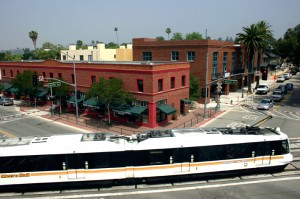 Successful rapid transit is not complicated. The best systems have a high percentage of people in the region who can walk to the stations. That means density, and that means density served by rapid transit.
Successful rapid transit is not complicated. The best systems have a high percentage of people in the region who can walk to the stations. That means density, and that means density served by rapid transit.
Now the Institute for Transportation & Development Policy has quantified how cities around the world fare (no pun intended) in these measures. In a new study called “People Near Transit: Improving Accessibility and Rapid Transit Coverage in Large Cities” [PDF], report authors Michael Marks, Jacob Mason, and Gabriel Oliveira found that cities like Paris and Barcelona score well both for population densities and for percentage of regional residents who can walk to transit (within one kilometer).
But the story is more mixed in cities like Washington DC. While the DC Metro scores pretty well in percentage of people in the city who live near transit (57%), only 12% of people in the region as a whole live near transit, due to the severe traffic-inducing sprawl of the greater metro area. Los Angeles fares even worse, with only 24% within the city near transit, and 11% of the region as a whole (of course LA’s system is less built out than DC’s).
It’s a variation of the study we released at Berkeley Law last year with Next 10, ranking California rail transit stations in part by their walkability.
And the same conclusions should be drawn from both studies: regions need to build more housing around rapid transit, and they need to make sure rapid transit serves only the densely built environment.
Leave a Reply
You must be logged in to post a comment.


